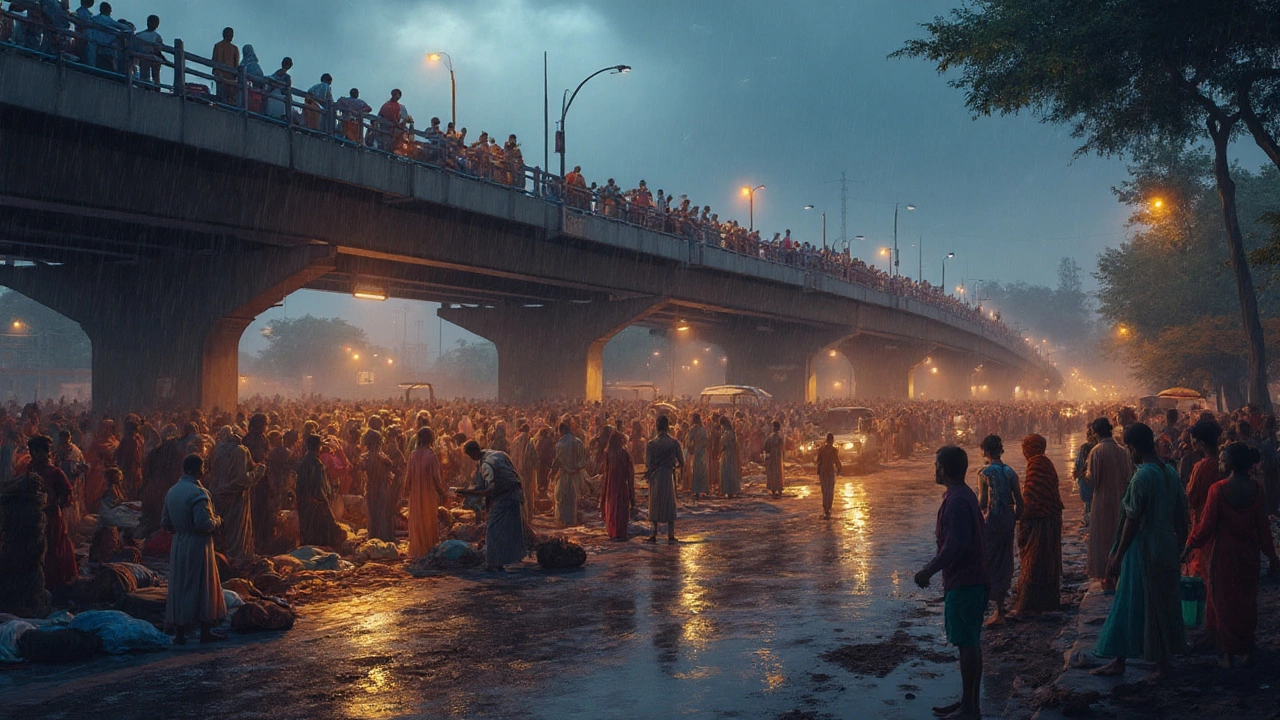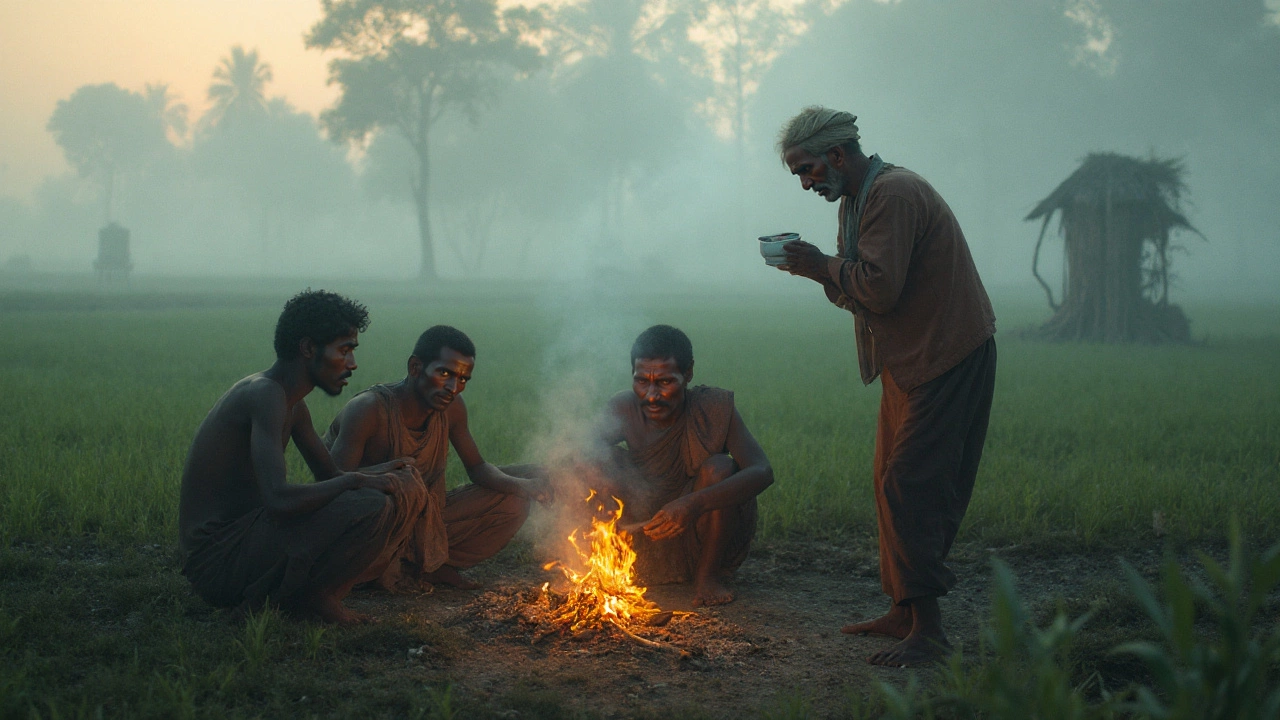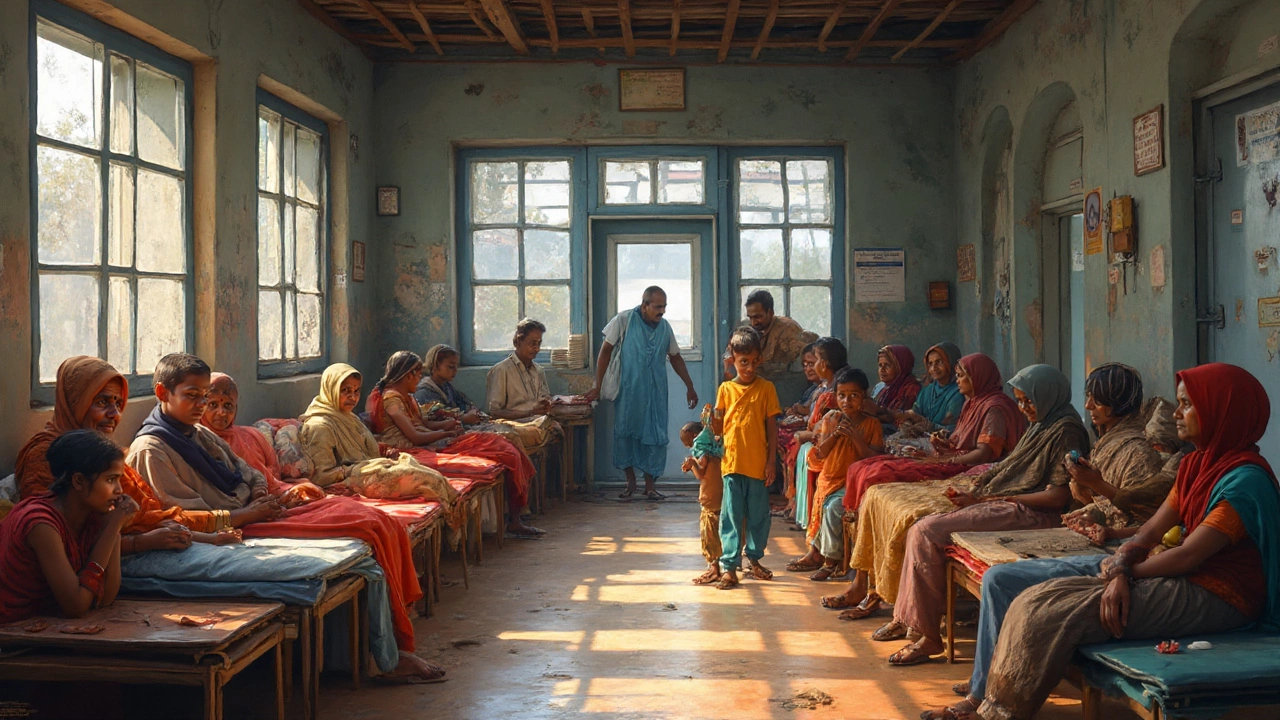Best Places for Homeless Support: Where to Find Help and Shelter
 Aug, 4 2025
Aug, 4 2025
On paper, there shouldn’t ever be a "best place" to be homeless. It sounds like a contradiction, something out of a bad joke. But walk through Melbourne’s laneways early on a winter morning, see how people find warmth tucked beneath thick blankets, in bus shelters, or near steaming vents, and the question suddenly makes too much sense. The difference between struggling through freezing rains and finding a bed in a shelter can be life and death. So, forget anything you’ve heard about roughing it anywhere: the best place for a homeless person isn’t just about location; it’s about survival, dignity, and maybe a shot at bouncing back.
What Makes a Place "Best" for People Experiencing Homelessness?
So, what are we really looking for here? City rankings often toss around “livability” for the housed crowd—but for someone without a home, the checklist flips. Safe shelters that let you stay more than a night, places without strict curfews, public transport that runs after midnight, free public toilets, or libraries that let people nap in peace. The little things, like getting a shower or storing your bags somewhere for a few hours, can change your whole day.
The weather is huge. Warmer climates mean you’re less likely to freeze, but heat waves can kill, too. Places like Sydney, Los Angeles, or Barcelona get talked about for their milder climates, and, yes, more rough sleepers show up where it rarely snows. But shelter beds and services matter even more. For example, a 2024 survey by the Australian Homelessness Monitor found that Melbourne had over 1,800 crisis beds for singles, more than Perth and Adelaide combined. But the waiting lists stretch months if not years for permanent housing, so shelter alone isn’t enough.
Look at street-level support too. In Lisbon, outreach teams check on rough sleepers daily, offer food, and direct them to medical help. In Vancouver, there are supervised injection sites—controversial but proven to save lives—and 24/7 drop-in centers. Melbourne’s Safe Haven Café stays open late for folks in crisis, delivering free meals and sympathetic ears. Sydney and Brisbane are starting to catch up with more mobile health clinics and food services, but coverage is far from perfect.
Then there’s how police and councils handle homelessness. Some US cities pass ordinances to fine or arrest people for sleeping rough, move them on, or confiscate property. In Helsinki, Finland, the “Housing First” model means you get permanent housing before you’re expected to quit drugs or find a job. Their rough sleeping rate has fallen from around 4,700 in 1987 to under 200 people in 2024, which is basically unheard of elsewhere. The city even turns vacant properties into social housing rather than knocking them down for condos.
It’s tempting to look for national rankings, but the same city can be a world apart depending on what gender you are, your background, whether you have a pet, or use drugs. For women, safety is non-negotiable. Melbourne and London now run women-only safe spaces, but they’re often full. Perth has First Nations outreach but the service gaps get filled only by stretched volunteers. In Los Angeles, a recent 2025 city report said only 40% of people looking for shelter on a given night could actually get one.
Free meals, showers, and gear are important, but places with reliable legal aid, mental health support, and social workers on call make the biggest difference. In some northern European cities like Copenhagen, the open data approach means almost every available bed or soup kitchen is listed in real-time apps. Try getting that in most Australian capitals—spoiler, you can’t, unless you have phone data and know where to look.
If you have a physical or mental disability, that’s a whole other layer. Wheelchair accessible shelters are rare, and a lot of city centers have endless stairs or no ramps at all. Sydney’s “WayBack” program is one of the few where mental health support is walk-in, and you don’t need a Medicare card. But the lines can get intense.
No matter where you go, community support and non-judgmental staff come up as the thing people remember most. This isn’t something you can measure in spreadsheets, but when you ask people who’ve survived rough sleeping in different cities, they name the places where services feel human, not robotic. Dignity matters—being treated as a person, not just a problem to be moved on or "managed".
| City | Homeless Population | Shelter Beds | Avg. Wait for Housing | 24/7 Support? |
|---|---|---|---|---|
| Melbourne | 26,238 | 1,864 | 13+ months | Some |
| Helsinki | around 200 | 220+ | 2-6 weeks | Yes |
| Los Angeles | 75,518 | 17,800 | 18+ months | Few |
| Lisbon | 3,500 | 480 | 6-9 months | Some |
| Vancouver | 4,821 | 1,000+ | 12+ months | Few |
No city gets it perfect, but the places at the top offer clean beds, trained staff, access to healthcare, and don’t throw you back out before sunrise. Most importantly, they give you access to social services you can actually reach—not just a number on a government website.

Cities and Countries: Who Does It Better?
If you listen to the news, you might hear about tents in San Francisco, outback camps in Perth, or Helsinki’s housing miracle. But does any city or country truly deserve a gold star for how they treat people experiencing homelessness?
Everyone talks about Finland. And for good reason: since they started their "Housing First" approach in 2008, rough sleeping has dropped by 80%. Instead of making housing a prize for ticking boxes (like no drugs, steady work, or no pets), they give people a place to live, with support workers who help sort out the rest afterwards. Most cities don’t do that. Finland bought up old hospitals, hotels, and even vacant buildings, turning them into permanent apartments. There are government social workers paired directly with health teams and housing charities. If you’re addicted or have mental health issues, the support staff come to you—no endless paper trails.
In Australia, Melbourne and Sydney have the best-funded homeless services, but they’re always in “crisis mode.” Melbourne swung into action during the COVID pandemic, putting rough sleepers in hotels with support staff on-call, and the city kept hundreds of those beds even after the emergency. But there’s limited housing after that, so people are often back out once the voucher ends. Other cities like Darwin or Alice Springs barely have shelter beds—a 2024 report from Homelessness Australia found over 80% of NT residents facing homelessness get turned away any given week. Rural areas across the globe often leave people with fewer options, no transport, and a real risk of violence or isolation.
Some US cities like Seattle and Portland have "tiny home villages" where people can get off the street but keep some independence. Safe parking zones let people live in their cars without getting fined or towed. It’s not ideal, but it’s better than camping in a doorway and waking up to a ticket. In Vancouver, there’s less tolerance for street camping but more access to harm reduction services (like the mobile clinics you see handing out naloxone and snacks at midnight). Where the weather goes ugly—like in Toronto or Chicago—warming centers and soup kitchens pop up in winter. Problem is, they close as soon as spring returns, so you’re left scrambling again.
London and Paris both have big city government funding for shelters, mental health, and food support. But overcrowding is chronic, and most city shelters have lockout rules—miss the 8pm check-in, you’re out of luck until the next day. Unsurprisingly, a lot of people stick to street camps or sleep on public transport, especially if you’ve got a pet or partner not allowed in most facilities.
What cities do right tends to boil down to cash, local government attitude, and human-level grit. Places that actually ask people what they need, from storage lockers to phone charging, do better. In Portugal, street outreach teams even bring bus passes, new ID documents, or help folks open bank accounts, because without those almost every service says "no". In 2025, cities like Dublin and Milan are piloting guaranteed cash stipends for those sleeping rough—no paperwork hoops required, and it actually boosts savings and health outcomes, fast.
It’s worth knowing that even the "best" cities struggle during big sporting events, holidays, or when rents jump. Shelters fill overnight, and the people who get bumped are the ones who can’t advocate for themselves, are too shy to push, or just plain unlucky that day. In the US, LA’s infamous "sweeps" of encampments before the Super Bowl cleared out hundreds in a fortnight. In Paris this June, the Olympics saw subways cleared and shelters crammed, leaving even seasoned outreach teams overwhelmed.
So if you’re looking for a single “best city,” you’ll find it’s a patchwork. Try to use local knowledge: talk to those with lived experience (listen first, they know the tricks). For Melbourne, head toward the CBD or St Kilda for dense service options. In Helsinki, the Housing Advice Centres are first stop for almost everyone. If you’re in a less-resourced city, find the churches or volunteer teams—sometimes peer support networks have the real-time info on open beds or meal times.

Smart Survival Tips and Resources for Anyone Facing Homelessness
Reality check: even in the most “liveable” city, the homeless population faces long odds. The right information—what’s open, who you can trust, which rules you have to follow—makes all the difference. Here are some survival hacks I’ve heard from people on the street that actually work.
- Always ask about the intake process before going to a shelter; some will let you register for a few days at once, others need daily check-ins.
- Find out about places with day storage lockers. In Melbourne, only five public shelters have them, and it’s first come, first served.
- Social media and messaging apps aren’t just for memes—look for mutual aid groups or neighborhood pages. In Australia, check “Homeless in Melbourne” on Facebook or Discord channels for up-to-date food runs and safe spaces.
- Local libraries can be a shelter from weather, charging devices, and even finding legal or housing help. In Toronto and LA, libraries host social workers.
- Keep a list of public toilets, water refill points, and 24/7 food pantries on your phone or written down. Google Maps has these, or check city council pages.
- Protect important documents (like ID or Centrelink cards) in a waterproof pouch. In Australia, Service Victoria issues digital IDs that work at most shelters now.
- If you have medications, speak openly to shelter staff. Many have lockboxes or even supervised scripts to help you keep your meds safe.
- Carry a small headlamp or flashlight—useful for late nights, but helps you avoid losing your stuff when moving between different sleeping spots.
- During cold snaps, stick close to 24-hour supermarkets or fast food chains until shelters reopen. Some locations don’t shoo people unless you’re disruptive.
- In bigger cities, mobile medical vans (like Melbourne’s "StreetDoc" or Vancouver’s "Lookout") will treat minor wounds, infections, and even mental health emergencies on the spot.
- Don’t be shy about asking for "peer support"—folks with lived experience of homelessness will often know tricks for surviving the local system and avoiding unsafe spots.
If you’re not tech savvy or don’t have a smartphone, look for outreach workers—they often carry printed service maps and will walk you through options. Some shelters will offer sim cards or loaner phones if you ask. Don’t overlook the local charities and community legal centers; in some cities, you can get fast-tracked into housing or support if you’re in a real crisis (domestic violence, sudden eviction, severe illness, etc.).
Want recs on the friendliest places? Word of mouth still rules. If you meet people at food vans or day centers, they'll share tips on where staff will bend the rules on curfew or guarantee a warm meal no matter what. Stick to areas with public transport—being able to get across town quickly often leads to more opportunities, especially if you have an appointment, job interview, or need to reach a specialist clinic.
Above all, remember that people are surviving—not just existing—by knowing their rights and banding together. Some cities might offer better beds, others have less violence, and a few, like Helsinki, actually show you that homelessness can be solved when governments treat housing as a right, not a privilege. Until then, the “best place” is wherever you connect with the right people and get the services you need. The search is exhausting, unfair, sometimes humiliating—but knowledge (and a little kindness) is power.